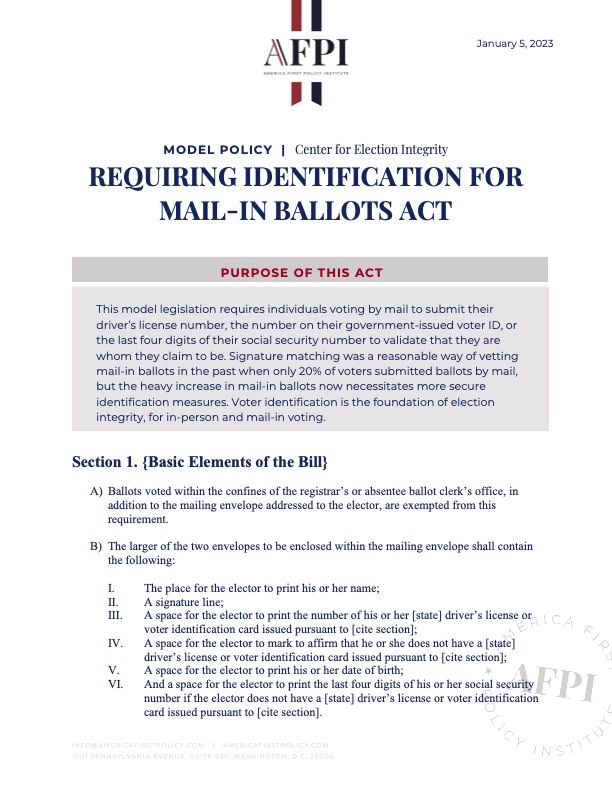January 5, 2023
Requiring Identification for Mail-In Ballots Act
purpose of this act
This model legislation requires individuals voting by mail to submit their driver’s license number, the number on their government-issued voter ID, or the last four digits of their social security number to validate that they are whom they claim to be. Signature matching was a reasonable way of vetting mail-in ballots in the past when only 20% of voters submitted ballots by mail, but the heavy increase in mail-in ballots now necessitates more secure identification measures. Voter identification is the foundation of election integrity, for in-person and mail-in voting.
Section 1. {Basic Elements of the Bill}
- Ballots voted within the confines of the registrar’s or absentee ballot clerk’s office, in addition to the mailing envelope addressed to the elector, are exempted from this requirement.
- The larger of the two envelopes to be enclosed within the mailing envelope shall contain the following:
- The place for the elector to print his or her name;
- A signature line;
- A space for the elector to print the number of his or her [state] driver’s license or voter identification card issued pursuant to [cite section];
- A space for the elector to mark to affirm that he or she does not have a [state] driver’s license or voter identification card issued pursuant to [cite section];
- A space for the elector to print his or her date of birth;
- And a space for the elector to print the last four digits of his or her social security number if the elector does not have a [state] driver’s license or voter identification card issued pursuant to [cite section].
- The envelope shall be designed so that the number of the elector’s [state] driver’s license or voter identification card issued pursuant to [cite section], the last four digits of the elector’s social security number, and the elector’s date of birth shall be hidden from view when the envelope is correctly sealed.
Section 2. {Responsibilities of the [appropriate election official]}
- The superintendent, board of registrars, or absentee ballot clerk [or other relevant election official] shall provide two envelopes for each official absentee ballot.
- The size and shape of both envelopes shall be determined by the Secretary of State in order to permit the placing of one within the other and both within the mailing envelope.
